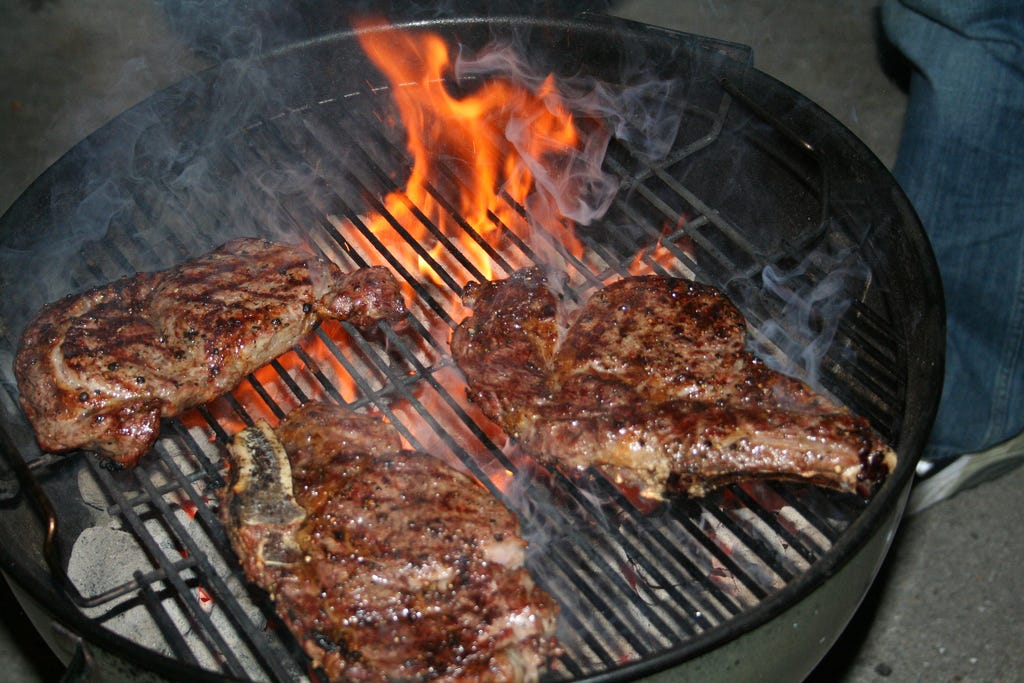When cooking having some chemistry and physic knowledge will increase your talent.
Buongiorno amici:
Dealing with food every day gives you a broad spectrum of how elements react under heated conditions—often, understanding the process that occurs and the structural changes allow you to become a better cook. After all, having some chemistry and physic knowledge when cooking will only increase your talent.
{Image attribution via Wikimedia Commons}
Here are nine tips for you to consider.
1) I am confident that you know that pasta gets cooked in boiling water (or any flavored liquid). The key, however, relies on the power of the liquid itself. Rapid boiling can often break the tissues and damage the pasta’s surface. Instead, I suggest dropping the pasta in quick boiling water, stir gently for 1 minute, and immediately reduce the heat to medium. You want simmering water and not a forceful boil, with limited stirring. More expensive pasta needs less stirring because of the composition of its wheat.
2) You have heard to brush the dirt off mushrooms because they will absorb more moisture if immersed in water. The fact is that mushrooms will take on about 2% of water; therefore, the water will evaporate when cooked for additional 3 minutes. So go ahead and wash your mushroom in water without hesitation.
3) When caramelizing onions, a pinch of baking soda will turn the onion slightly softer and achieve a quicker golden color and more soothing. It would be best if you reached a higher pH for a quicker reaction. Please don’t overdo it. You only need 1/4 of a teaspoon for one pound of onion.
4) If your recipe calls for scalded milk, there is a reason. Scalding the milk will break down the whey proteins found in milk, responsible for damaging the gluten when raising any dough.
5) A pinch of kosher salt in your morning coffee will remove some bitterness and smooth out the taste. In addition, you will have a pleasant balance, especially when using untreated groundwater or questionable city water. Use the ratio of 1/4 of a teaspoon for every six tablespoons of grounds.
6) Let your grilled meats rest before cutting. If you slice your steak immediately, the moisture from the muscle fiber will run out. Instead, allow about 10 minutes before cutting, resulting in a moist and succulent product with all the flavors intact.
7) Carryover cooking increases the temperature after you have removed any protein from a natural heat element. When meat rest, the internal temperature climbs from five to ten degrees, turning the product from a medium to a well-done. The next time you cook your favorite cut of meat protein, keep the carryover step in mind. So undercook everything.
8) One step I take after blanching vegetables, especially green beans and asparagus, is to coat them in olive oil after draining. The steam from the boiling liquid removes moisture from the veggies, but the olive oil or any other oils prevents shriveling. In addition, the fat will create a barrier that locks in moisture and color.
9) Another technique when dealing with fresh berries is to soak them in water as soon as you take them home from the market. Take a bowl and fill it with warm water reaching the temperature of 125F. Drop the berries in the water for about 30 seconds and drain. The warm water will extend the shelf-life and prevent mold from forming.
Thanks for reading. Eat safe! Ciao Chef W
Download Chef Walters E-Books
Please tune in to our latest Flavors + Knowledge Podcast
Subscribe to the Italian version SAPERE + SAPORI
Subscribe to News you can eat 24 Video-Cast on YouTube
Support Chef Walters Children’s Diabetes Foundation
For recipes, visit the chef blog.

Note: The views and opinions expressed in the Flavors and Knowledge newsletters are those of the authors and do not necessarily reflect Flavors and Knowledge’s official policy or position. Our blogger’s or authors’ content is of their opinion and not intended to malign any religion, ethnic group, club, organization, company, individual, or anyone. Any general advice posted on our blog, website, or app is only for informational purposes and, without any intentions, to replace any medical or other advice.
















